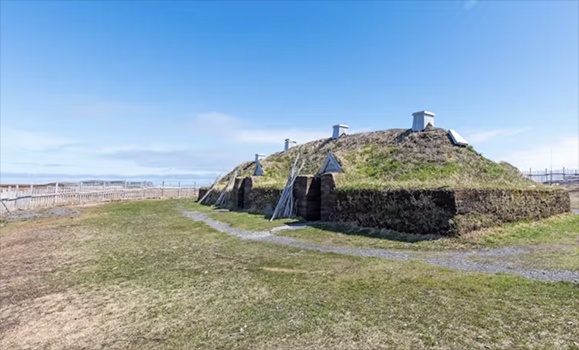, PhD Candidate in English Literature,╠²
The seemingly fantastical world of the Middle Ages has held western popular culture in fascination since (at least) its .
European medieval imagery or narratives, partly popularized in the early to mid-20th century, with works like , still permeates popular culture. ŌĆ£The medievalŌĆØ is used to evoke both for all ages, and mature stories featuring .
Unfortunately, there is also a sinister side to our collective love affair with knights and dragons of yore. White nationalist and alt-right groups have taken up the stories, imagery and histories of what is popularly imagined in the West as the Middle Ages to visualize the existence of , whether imagined as fully Christian or neo-pagan Europeans.
Revisiting the meaning of the Middle Ages, and how medieval imagery and narratives are appropriated and understood today, is therefore necessary .
As a scholar raised as a member of the M├®tis Nation in B.C. (though my current documentation is insufficient for citizenship), some of my work has been concerned with what it means to decolonize medieval studies. With literature professor Elizabeth Edwards, I have examined how .
Here, I consider the impact of white supremacy on historical and contemporary scholarly and popular understandings of the Middle Ages, and focus on how scholars are shifting the narrative with critical race and Indigenous approaches.
White nationalism
Critical race scholars and highlighted the colonial histories of medieval studies and its associated myths and stereotypes.
As critical race literature scholar Matthew X. Vernon notes in , white supremacist theorists have seen medieval England as ŌĆ£available for being imaginatively constructed as an era of racial purity and military subjugation on ŌĆśforeign peoples.ŌĆÖŌĆØ Such ŌĆ£extrapolations of the Middle AgesŌĆØ have served to ŌĆ£racializ[e] bodies and then fi[x] horizons of expectations for what a race could achieve.ŌĆØ
Medievalist scholars Mary Rambaran-Olm and Erik Wade note that some American and English writers . This use has perpetuated false ideas of what it means to be ŌĆ£nativeŌĆØ to Britain, and by extention to claim special ŌĆ£whiteŌĆØ belonging and rights in settler colonial societies.
Indigenizing approaches to the Middle Ages
The idea of the Middle Ages is arguably tightly interwoven with . Indigenous and non-Indigenous scholars with a decolonial focus have begun to understand the European medieval period through and .
How have Indigenous and non-Indigenous scholars approached the Middle Ages from a decolonial lens?
1. Red Reading
a form of literary analysis that uses Indigenous approaches and methodologies to read non-Indigenous texts, was first coined by and simultaneously developed by .
In my own work, I read texts like to understand how authors incorporated elements of oral storytelling into their written work, not as a an accident of progress but as a purposeful, artistic choice.
╠²
2. Examining settler colonialism emerging in premodern history
Tarren Andrews (Bitterroot Salish), a literature scholar, revisits . Her scholarship examined male heterosexual and patriarchal control over women in the English poem of
SheŌĆÖs focussed on legal and literary artifacts from before 1100 from the North Atlantic alongside stories or documents from Turtle Island (North America).
3. Deconstructing Norse contact on Turtle Island
The field of medieval studies had long considered itself immune to the need for decolonial work, as it imagined itself to exist prior to European contact with Indigenous societies beyond Europe ŌĆö other then a brief interaction between the Indigenous peoples of Newfoundland and the Norse.
This contact was immortalized in the archaeological site of LŌĆÖAnse-Aux-Meadow in Newfoundland, , and sagas (such as the Greenlander Saga and the Saga of Erik the Red). Literature scholars like have examined interactions in the saga to interrogate how notions of race were developed and depicted in pre-modern times.
Christopher Crocker, a Qualipu MiŌĆÖkmaw scholar of medieval and modern Icelandic literature, notes how the fascination with Norse ŌĆö at the expense of pre-colonial Indigenous studies and representation.
4. How colonial rhetoric imagined Indigenous Peoples as ŌĆ£medievalŌĆØ
Some scholars, like sociologist Daniel S. Goh or post-colonial medievalist scholar Helen Young, examine how discussing and framing . Medievalism was used to justify .
5. Indigenous adaptations of medieval literature
English literature scholar highlights how Indigenous poets have appropriated medieval poetry styles, as part of decolonial literary movements.
Hsy showcases the work of Osage medievalist, . This style was a popular form, written from the perspective of an object, such as a sword or book, to reveal itself to the audience.
╠²
Alongside his translations, some riddles from the point of view of an eagle fan or birch canoe, as an act of reclaiming both halves of his identity ŌĆö the Osage and the European.
Shifting the public perception
Work related to .
I hope this thinking, and the thinking of other scholars, can inform what is taught in classrooms. This can help students carry forward new understandings as they both create and consume medieval-themed images, games, videos and narratives.![]()
This article is republished from under a Creative Commons license. Read the .

